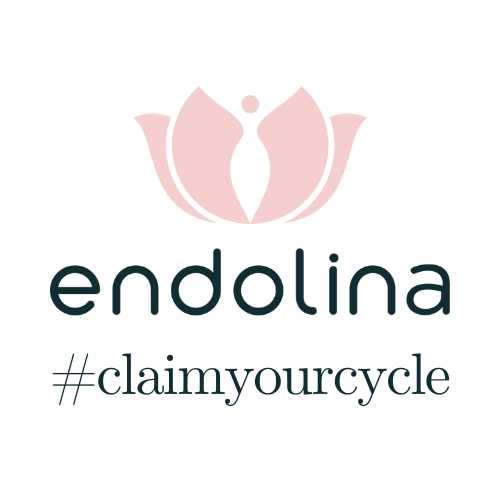Let’s face it—hormones often get a bad rap. We’ve all heard phrases like “hormonal mess” thrown around casually, but here’s the truth: our hormones are not our enemies. They’re powerful allies that help us understand our bodies, moods, and energy levels. Premenstrual Syndrome (PMS) and Premenstrual Dysphoric Disorder (PMDD) are part of this complex hormonal symphony. Let’s dive into how we can live in alignment with these cycles and empower ourselves through knowledge and lifestyle choices.
What Are PMS and PMDD?
PMS refers to a group of physical and emotional symptoms that occur in the luteal phase of your menstrual cycle (the time between ovulation and the start of your period). Symptoms like bloating, fatigue, and mood swings are common. For about 5–8% of women, these symptoms escalate into PMDD, a severe form of PMS characterized by intense emotional and physical distress.
According to the Mayo Clinic, the exact cause of PMS and PMDD is still under investigation, but hormonal fluctuations during the luteal phase are believed to play a significant role. Additionally, sensitivity to changes in serotonin, a neurotransmitter affecting mood, might exacerbate symptoms.
Easy Ways to Relieve PMS and PMDD
Nutrition: The Fuel for Balance
What you eat can influence how you feel. Research in the Iranian Journal of Nursing and Midwifery Research highlights that vitamins D and E can significantly reduce PMS symptoms. Incorporate foods like salmon, fortified orange juice, almonds, and sunflower seeds into your diet.
A study in The Journal of Reproductive Medicine also suggests cutting back on sugary and processed foods, as they can intensify bloating and mood swings. Instead, reach for nutrient-rich options like leafy greens, whole grains, and fresh fruit.
Move Your Body, Boost Your Mood
Exercise isn’t just for physical fitness; it’s a mood booster too! A clinical trial published in BMC Women’s Health found that eight weeks of aerobic exercise reduced the severity of PMS symptoms. Whether it’s a dance class, a brisk walk, or yoga, find movement you enjoy and make it a habit.
Sleep: Your Secret Weapon
PMS can wreak havoc on your sleep patterns. The Sleep Foundation notes that hormonal shifts can lead to insomnia during the luteal phase. Prioritize good sleep hygiene by creating a calming bedtime routine, limiting caffeine intake, and ensuring your bedroom is cool and dark.
Mindfulness and Stress Management
Stress can amplify PMS and PMDD symptoms. Practices like meditation, journaling, and deep breathing exercises can help you stay grounded. Research in Psychotherapy and Psychosomatics has shown that internet-based cognitive behavioral therapy (CBT) can provide effective relief for PMDD.
Consider Natural Supplements
Herbal remedies such as chasteberry and evening primrose oil have been used for centuries to alleviate PMS symptoms. However, always consult a healthcare provider before introducing new supplements.
Celebrating Your Cycle
Your menstrual cycle is more than a monthly inconvenience; it’s a powerful indicator of your overall health. As The British Journal of Obstetrics and Gynaecology notes, understanding the phases of your cycle can help you optimize your energy levels and productivity.
- Follicular Phase (Day 1–13): Energy and focus often peak. Use this time to tackle challenging tasks.
- Ovulation (Day 14): Confidence and creativity surge. Go ahead and schedule that presentation or date night!
- Luteal Phase (Day 15–28): Embrace rest and self-care. It’s OK to slow down.
Thrive with Endolina
You are not “hormonal.” You are powerful.
Living in alignment with your cycle starts with understanding and embracing it. At Endolina, we’re here to help you navigate your hormonal ebbs and flows with natural solutions and empowering insights. Explore our range of products designed to support your unique cycle and join our community of women who are rewriting the narrative around the feminine cycle.
References
References
Casper, Robert F. “Premenstrual Syndrome (PMS) and Premenstrual Dysphoric Disorder (PMDD) (Beyond the Basics).” UpToDate, 2021.
https://www.uptodate.com/contents/premenstrual-syndrome-and-premenstrual-dysphoric-disorder-beyond-the-basics
Dadkhah, Hajar, et al. “Evaluating the Effects of Vitamin D and Vitamin E Supplement on Premenstrual Syndrome: A Randomized, Double-Blind, Controlled Trial.” Iranian Journal of Nursing and Midwifery Research, vol. 21, no. 2, Mar. 2016, pp. 159–64.
https://www.ijnmrjournal.net/article.asp?issn=1735-9066;year=2016;volume=21;issue=2;spage=159;epage=164;aulast=Dadkhah
Lente, E. A., et al. “Normal Variation in the Length of the Luteal Phase of the Menstrual Cycle.” British Journal of Obstetrics and Gynaecology, vol. 91, no. 7, July 1984, pp. 685–89.
https://obgyn.onlinelibrary.wiley.com/doi/abs/10.1111/j.1471-0528.1984.tb04821.x
Lete, Iñaki, and Oihane Lapuente. “Contraceptive Options for Women with Premenstrual Dysphoric Disorder.” Open Access Journal of Contraception, vol. 7, Aug. 2016, pp. 117–25.
https://www.dovepress.com/contraceptive-options-for-women-with-premenstrual-dysphoric-disorder--peer-reviewed-fulltext-article-OAJC
Mohebbi Dehnavi, Zahra, et al. “The Effect of 8 Weeks Aerobic Exercise on Severity of Physical Symptoms of Premenstrual Syndrome.” BMC Women’s Health, vol. 18, no. 1, May 2018.
https://bmcwomenshealth.biomedcentral.com/articles/10.1186/s12905-018-0568-5
Sleep Foundation. “PMS and Insomnia.” September 15, 2020.
https://www.sleepfoundation.org/insomnia/pms-and-insomnia
Mayo Clinic. “Premenstrual Syndrome (PMS).”
https://www.mayoclinic.org/diseases-conditions/premenstrual-syndrome/symptoms-causes/syc-20376780
The American College of Obstetricians and Gynecologists (ACOG). “Premenstrual Syndrome (PMS).”
https://www.acog.org/womens-health/faqs/premenstrual-syndrome
Rossignol, A. M., and H. Bonnlander. “Prevalence and Severity of the Premenstrual Syndrome.” The Journal of Reproductive Medicine, vol. 36, no. 2, Feb. 1991, pp. 131–36.
Shimoda, Rei, et al. “Women’s Emotional and Sexual Attraction to Men across the Menstrual Cycle.” Behavioral Ecology, vol. 29, no. 1, Jan. 2018, pp. 51–59.
https://academic.oup.com/beheco/article/29/1/51/4781407
Steiner, M. “Premenstrual Syndrome and Premenstrual Dysphoric Disorder.” Journal of Psychiatry & Neuroscience, vol. 25, no. 5, Nov. 2000, pp. 459–68.
https://www.jpn.ca/content/25/5/459
Weise, Cornelia, et al. “Internet-Based Cognitive-Behavioural Intervention for Women with Premenstrual Dysphoric Disorder.” Psychotherapy and Psychosomatics, vol. 88, no. 1, Feb. 2019, pp. 16–29.
https://www.karger.com/Article/FullText/493922

